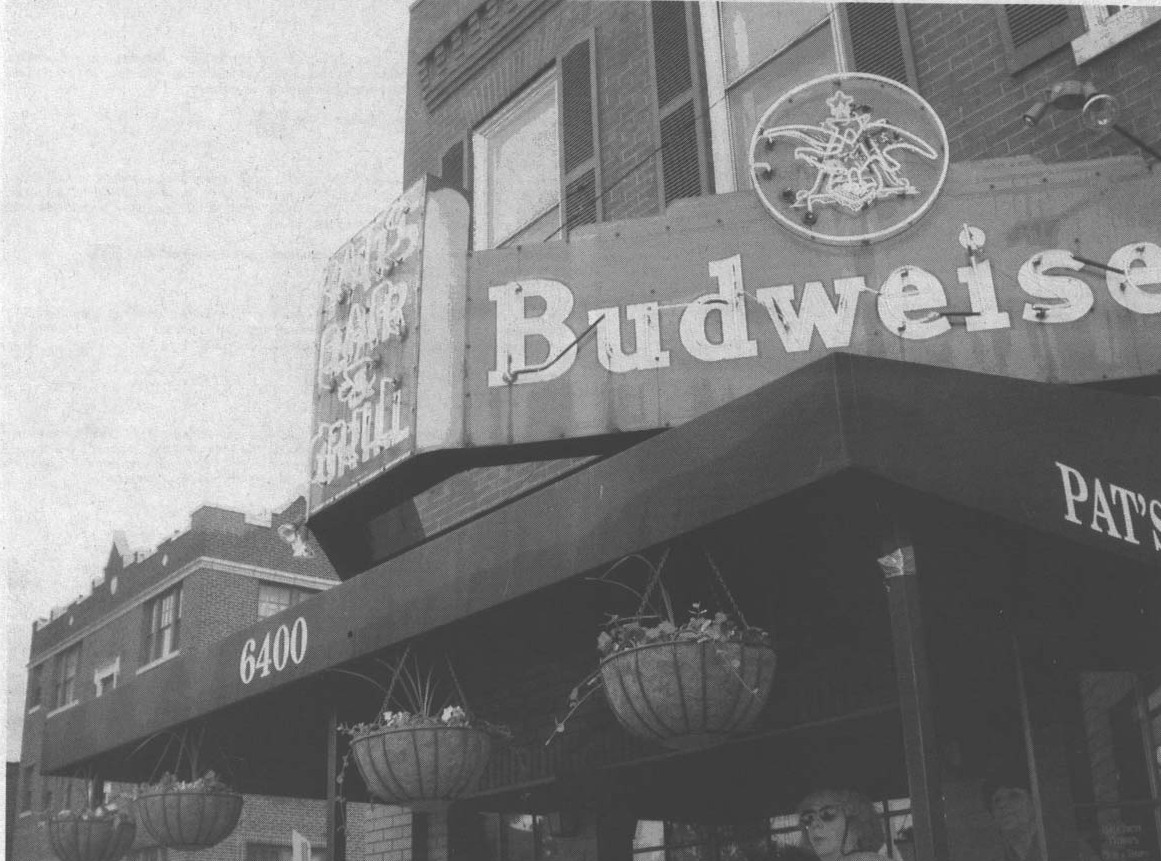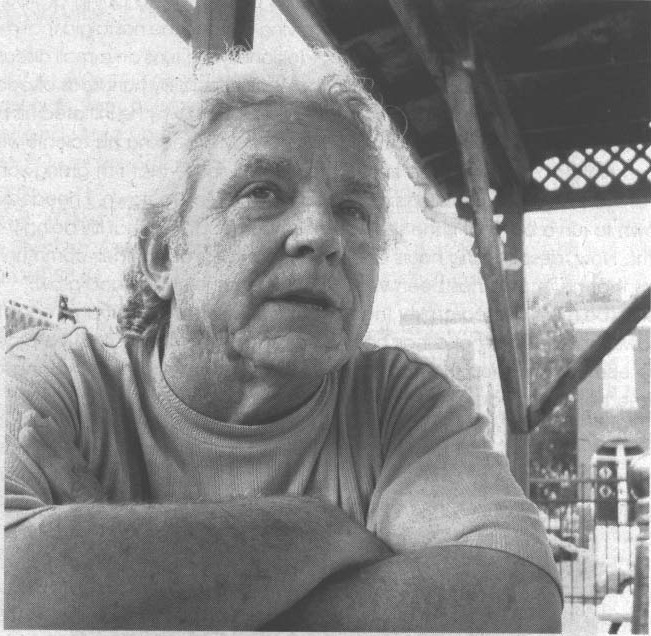

As a blue-collar Irish-American neighborhood, Dogtown is one of the few remaining old-time, "ethnic neighborhoods" in the country.
There aren't many places like Dogtown left in St. Louis - or the United States for that matter. As a blue-collar, Irish-American neighborhood, it is one of the few remaining old-time, "ethnic communities" in the country. This is a distinction that most Dogtowners seem to be very proud of, and as a result many are interested in preserving it - or at least proudly displaying it. In fact, whether you're sipping a stout at Seamus McDaniel's or Pat's Bar and Grill, attending the neighborhood St. Patrick's Day parade, or just walking down the street, it's impossible to escape a slew of shamrocks, Irish flags, and other nostalgic displays of Irish culture. It indeed seems to be a place that is deeply rooted in its heritage.
However, an interesting thing happens when you ask a Dogtowner to discuss anything related to Ireland; more often than not, they know nothing of the place., You won't hear a rant on Irish politics or an explanation of Irish literature. Some couldn't even tell you that Dublin is the capitol. How can people know so little about the identity that they cling to so fiercely?
Bob Corbett pondered this question for some time. Bob, who’s 63, was born into a family that had lived in the neighborhood for four generations. He grew up there until he was 22 and then decided to set off on his own. For the better part of thirty years he divided his time between traveling the world, practicing charity, and sporadically heading up the philosophy department at Webster University. He did not return to Dogtown until about ten years ago. He since has moved back into the home that he grew up in and now dedicates most of his time to researching Dogtown history.

"Growing up here, we knew nothing about Ireland, but we lived the life of Irish villagers becasue that was the part of the culture that was handed down to us."
Needless to say, Bob knows plenty about Irish culture, among other things, but Bob’s story is different than most Dogtowners’. Many people his age, and older, have never lived anywhere else, and most Dogtown residents are working class. This is not a neighborhood where philosophers are found sipping coffee and discussing Heidegger (or European history for that matter); Dogtown is more of a beer and baseball kind of place. Nevertheless, while the neighborhood hardly has a scholarly air about it, it’s presumable that people would at least know something about Ireland, especially when the place truly does feel so “Irish”. Interestingly, Bob and his brother, John, were talking recently and had a revelation. They realized that even though most folks in the neighborhood know very little about Irish culture, they still practice the Irish lifestyle. The values of Dogtowners have always been based upon distinctive elements like family, community, and Catholicism – principles that still govern the typical rural, Irish communities of today. “Growing up here, we knew nothing about Ireland,” Bob says, “But we lived the life of Irish villagers because that was the part of the culture that was handed down to us. Though we didn’t eat the food, read the literature, or speak Gaelic, we lived the fundamental lifestyle found in Ireland…and we still do.” In the mid 1800s, when waves of immigrants (a majority of whom were Irish) began settling in the area to work in clay mines, brick factories, and other forms of industry, they created an environment that felt like home. Their community was formed around a Catholic Church, St. James the Greater (still the heart and soul of the Dogtown in the eyes of many), and a sense of camaraderie was instilled in the neighborhood. Though certain particulars of that culture were lost over the years, the core principles of those first settlers have been retained. In Dogtown, people still rally around their families, their neighbors, and the Vatican.
For Dogtowners, sustaining this way of life is essential to the future of their community. Whether they’re restoring old photographs or doing genealogy projects, people from the neighborhood often show a desire to preserve their heritage. Though Joe Finn, owner of Pat’s Bar and Grill, was originally from the Central West End, even he has been caught up in this sentiment. Joe was a stockbroker who had become a fixture at Pat’s. There he was among of a group of regulars, some that had been sitting at the bar for the better part of fifty years. One of them was Paul Jovonovich (or “PJ”), who then owned Pat’s with his wife, Teresa Connolly, the daughter of Pat himself. When PJ died almost ten years ago, Joe felt compelled to do something to keep Pat’s afloat. He first helped Teresa by bartending at night after work, and once Teresa had grown tired of owning the bar alone, Joe offered to buy it from her. Teresa probably could have sold the place to a higher bidder, but she knew that Joe would keep the spirit of the Pat’s alive – so Joe left his nice desk job and moved to Dogtown to run a bar that is the size of many stockbrokers’ living rooms. Now, despite long hours and constant headaches, Joe finds that his choice has been very rewarding. He considers himself to be more of a caretaker than a business owner, and he knows that when he also has had enough, he’ll look for someone else that will keep the tradition going. “There is a camaraderie here that you don’t find in most places,” he says. “It’s neat because people in Dogtown aren’t rich and aren’t necessarily trying to be. Things like family and friendship are much more important here than they are in mainstream America.” People living in Dogtown would like keep things that way.
However, as more communities in St. Louis are either gentrified or mainstreamed, it’s safe to say that the Dogtown way of life will face increasing challenges as time goes on. That’s why the efforts of those like Joe Finn and Bob Corbett are so important. Bob, in fact, is now trying to recruit others to help him preserve the neighborhood’s history. He has recently helped found “The Dogtown Historical Society”, a small group (for now) that is dedicated to doing profound historical research and moving beyond the nostalgia that many Dogtowners indulge in. Additionally, he runs an e-mail discussion list on Dogtown history that is accessed by hundreds of people daily.
When asked why he initiated his history effort, Bob notes that it is his way of sharing his talents with the community. “I need to have a sense that I’m giving something,” he says. “Once I came back to Dogtown, I needed a way to contribute to the neighborhood. I felt that by doing this – by helping raise peoples’ consciousness about their community and its history, I might be helping the neighborhood grow.”
It is this sense of heritage and this spirit of generosity that makes Dogtown a distinctive place. The community serves as a reminder that in embracing our past, we can improve our future.
| HOME | DOGTOWN |
| Bibliography | Oral history | Recorded history | Photos |
| YOUR page | External links | Walking Tour |